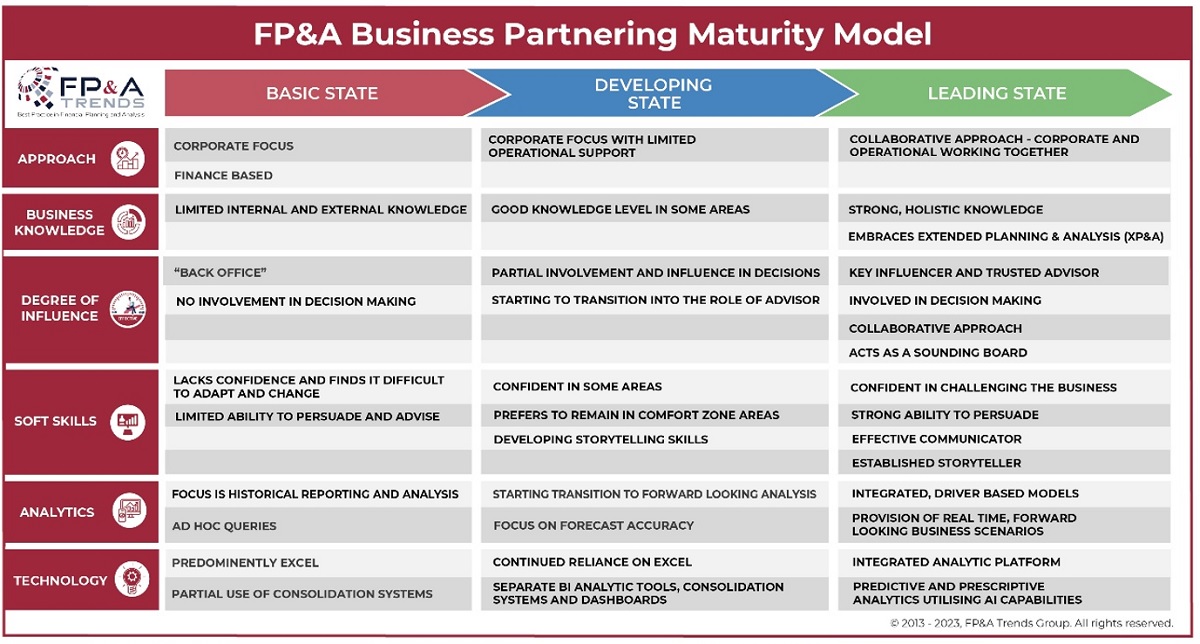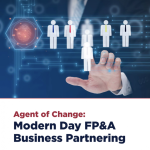In this article, the author refers to her previous experience that revealed the importance of Business...

Over many years as a finance professional and a CFO, I have developed an acute ability to build authentic relationships. These relations are critical for succeeding in our industry, especially as an FP&A Business Partner. I have worked with many different people in various sectors with different organisational cultures; every person had a different style of collaboration and approach to decision-making. Learning from them all, with a lot of trial and error and a great deal of empathy, here are my top ten tips to help you enjoy success as an FP&A Business Partner.
1. Trust takes time to build
Strong relationships are founded on trust. To be trusted, you need to be reliable, honest, and capable. Turning up on day one and expecting to be trusted is unrealistic and counterproductive for achieving lasting relationships. The other person doesn’t know you. Their starting opinion of you may be based on their poor experience with previous business partners or distrust of your motivations. You need to put in the hard work and earn trust over time. You also need to be genuinely interested in the other person to build rapport. Nobody trusts someone who doesn’t care.
2. Ask them how they want to work with you
We can wrongly assume we know how others like to work because we project our own preferences onto others. What communication channels work well? For example, a preference for short email communication rather than short phone calls. Do they need time to talk issues through with you, or do they prefer your written recommendations? How much time can they invest in the partnership? Do they prefer all the details or a summary of actionable insights? What should and shouldn’t you do? When you ask, listen carefully to the answers. Then follow it. After a while, check in to see if how you are working together suits them.
3. Let them know your capabilities
You can highlight your and your team’s capabilities and experience as part of getting to know one another. You should then focus on proving your capabilities in the work you produce and how you go about it. These capabilities can be technical as well as soft skills. You can share when you are developing a new capability and ask for their help. For example, you may have limited exposure to a certain type of customer comprising a large part of sales volume. Asking for help to develop your understanding indicates your willingness to grow.
4. Ask them what they want, why and what decisions they are facing
When you are asked for advice, think about what the reader/recipient wants to know from their point of view and in a way that suits them. Then, test it with them. One way to do this is to structure your report or presentation in an easy-to-consume way. It is better to write in plain language, to include signposts (such as meaningful headings to charts), and to structure the information logically. It will minimise the time needed to read and absorb the findings and recommendations. When you have an outline – and before you do all the analysis work – check in with the decision-maker on whether the approach suits what is needed. One final point on this tip: what is logical for you may not be for them. That is why you should always check in and ensure you are both on the same page. Unspoken assumptions will stop a productive relationship in its tracks.
5. Be reliable
Deliver what and when you say you will. It is better to communicate early if you understand that the timing/deadline may be delayed. Be honest; don’t sugar-coat, even when you make mistakes. People respect others who can admit fault and work quickly to fix it – no one likes things being hidden.
6. Tell stories
An array of charts and tables of information can be a lot to absorb. Make sure you tell a story – what do the tables say? What does the information mean? Always try to answer the “so what?” question and do it simply, just like telling a story.
7. Be accurate enough - good enough is better than taking a long time
Not every decision requires detailed, precise analysis to support it. Sometimes, a rough estimate will do the trick. Check in with the person who will make the decision about the level of accuracy and effort they need.
8. Be transparent
Sometimes, a balance between central organisational objectives and local objectives is hard to strike. Being completely open about this balance and the natural tension it brings can reduce anxiety and limit winner/loser conversations. Balance the overall organisational targets and financials with the divisional needs.
9. Link financials and analysis to strategy and outcomes
Always frame your analysis and advice in outcomes and impact. It will align your work with your goals. Articulating the ‘so what?’ clearly will mean your analysis and advice hit the mark, which builds trust in your capability.
10. Move from transactional fixer to trusted adviser
The FP&A Business Partnering Maturity Model shows how to move to a trusted adviser. Your degree of influence is higher when you make this transition. It will lead to more variety in your work and greater job satisfaction.

Figure 1
Conclusion
These ten tips, coupled with the Maturity Model, will help you to develop strong relationships based on trust. Being reliable, capable of solving problems, and always being transparent and honest will mean you can develop authentic relationships and enjoy more interesting work.
Subscribe to
FP&A Trends Digest

We will regularly update you on the latest trends and developments in FP&A. Take the opportunity to have articles written by finance thought leaders delivered directly to your inbox; watch compelling webinars; connect with like-minded professionals; and become a part of our global community.






